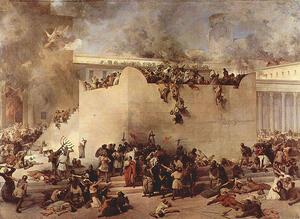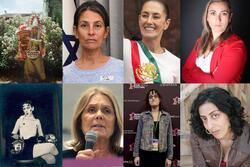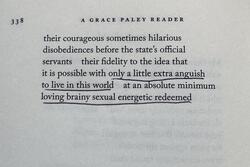Tisha B'Av, Ride, and Mayer
Over the weekend, I was at a Modern Orthodox temple honoring Tisha B’Av, the 9th day in the month of Av, the saddest day in the Jewish year. I was dressed modestly, wearing a skirt to my ankles, my arms covered to my wrists, and like Jewish mourners throughout the world and throughout time, I sat on the floor, with the Tanakh (Jewish Bible) on my lap, reading Lamentations.
I expected that I would be thinking about the destruction of the First Temple (587 BCE) or of the Second Temple (70 CE), which occurred 583 years later to the day. I thought I might reflect on the expulsion of the Jews from Spain, which occurred again on the same day in 1492-- as Columbus set sail and the Sephardic diaspora began. I figured I might be thinking about the biblical origins of the holiday, when the 12 spies sold the Jewish people short, reporting that we must have been like “grasshoppers” in the eyes of our enemies.
I did not think of any of these things.
Instead to my surprise I thought of two women in the news last week--Sally Ride and Marissa Mayer--and how differently they’ve worn the mantel of woman as role model.
Sally Ride, our futuristic folk hero and the youngest American to be launched into space, cultivated herself as deeply as she cultivated the scientific interest and excitement of rising generations. In an archived recording played in a recent NPR piece with Steve Inskeep, Sally Ride said, “All you need to do is look into the eyes of the kids growing up today. When you mention astronauts, the planets, the space program to them, their eyes just light up. It really captivates them and it ignites something deep inside of all of us.”
Marissa Mayer, whose attitude towards feminism is tepid at best, announces she’s pregnant and will be working through her four-week maternity leave. What kind of message does this send to women, to families, who don’t have the same resources or desires as she does? Yes, Mayer is also blazing a trail in science, but it seems it’s a path for one. First Google female hire, youngest Fortune 500 CEO, Mayer in a 92nd Street Y interview said: “The interesting thing for me, is that I got to live in a bubble... I think I’ve always just been very gender unaware.”
A week ago when I first heard this interview, my reflexive response was: “Well get aware, Mayer! Burst the bubble, open your eyes!” When you step into high-powered leadership and become a public figure, especially as a woman, there is an accompanying responsibility. It’s hard to believe that she’s made it this far without wondering why she was often the only woman in the room. Maybe. In any event, whether it’s from genuine naiveté or a staunch refusal to wear the mantel feminists are thrusting upon her, it doesn’t matter. Because in the end, she gets to decide what she wants to fight for.
So did Sally Ride. She came out posthumously when her obituary said she was "survived by her partner of 27 years, Tam O'Shaughnessy.” Many were up in arms: Why didn’t Sally use her high profile position, her celebrity status, to further the cause of gay rights? My answer: we can only do so much. Sally Ride is just one woman, Marissa Mayer is just one woman, each with her own passions and priorities. Sally Ride lived for science, was passionately committed to inspiring women and girls to get involved in the STEM fields – Science, Technology, Engineering, and Mathematics. Marissa Mayer...Marissa Mayer...lives for...herself? Her family? Technology’s advancement? Implementing a successful vision and Yahoo strategy? Time will tell.
And maybe that’s the case with Mayer. Maybe she’ll be responsible for technological advancements that she wouldn’t have been able to catalyze if she were taking a longer matenity leave or advocating for women's rights. I want to cut her some slack. Perhaps I’m still colored by the reflective nature of Tisha B’Av.
It is said that the second Temple was destroyed because the Jewish people were practicing baseless hatred and lacked unity. I wonder: do those who build their own ivory tower, their own holy of holies, still deserve a reach out?
At temple before the start of the Tisha B’Av service, I experienced a beautiful ritual that’s part of the Havdalah ceremony. Havdalah, which means “separation,” marks the end of Shabbat, a time of rest, and the beginning of the workweek. Towards the end of the ceremony, a large candle is lit and all gathered raise their hands in the direction of the flame, gazing at their fingers by candlelight. Why this ritual? I believe it’s so we will reconnect to our selves as creators. Looking at our hands is a way to be conscious about the kind of person we wish to be in the world this coming week, whether we wish to build up or tear down, whom we wish to reach out to, what we wish to keep close. It’s a time to ask ourselves: “What kind of Temple builder do I want to be?”







